



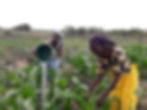
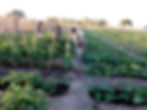
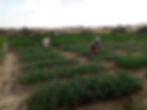
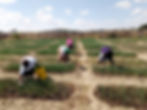
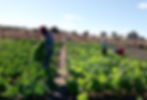











Farmers club
Farmers’ Clubs Gutu is located in drier Agro ecological natural region IV and V. The district is exposed to droughts and usually receives rainfall below 500mm. This is explained as a result of climate change. However, in 2021, the area where Farmers’ Clubs Gutu project operates received above normal rainfall of an average 815mm. This resulted in new challenges for the farming community with new incidences of pests and disease outbreaks affecting crops and livestock. In response to the disease outbreak, Farmers’ Clubs Gutu worked in collaboration with the Ministry of Agriculture to control the outbreak and to ensure that smallholder farmers’ productive capacity was ensured and improved.
Farmers’ Clubs Gutu was structured in such a way that it worked with 1,000 smallholder farmers who were divided into 4 projects of 250 members each and 20 Farmers’ Clubs of 50 members. The farmers were involved in training, demonstrations and workshops which enhanced their organizational and productive capacities. The Project leaders encouraged farmers to adopt diversified farming and adding high value crops either under garden or field production. Within their clubs, the 1,000 smallholder farmers were trained on various topics which included among others conservation farming, crop diversification, pest and disease control and marketing.
Training and demonstrations were done at 20 club gardens and 20 model fields which were maintained by the farmers. Through effective collaboration effort and partnership arrangement with key stakeholders such as AGRITEX, Syngenta Seed house and the farmers, the project made great progress during the year. In addition to experiences gained in the previous years of implementation, the project strengthened livestock production skills among its farmers who benefited from the chicken and goat pass on cycles. The project introduced garlic farming to farmers in the project which was an additional source of income as the market was already established. Among its achievements, the projects conducted 6 field days. 20 model fields which were maintained in the crop management period were re-established in the land preparation period. The project carried out 155 hygiene actions at the club and core group level. 70 club committee training sessions were conducted covering different topics, among them administration and governance, leadership, entrepreneurship, market literacy and conservation farming. From the farmer visits, it was noted that 760 farmer families were food secure. All the farmers had an individual garden where they practiced and applied what they learnt from group garden. The project created interactive learning platforms through 6 field days and 3 gardens days where farmers shared experiences. Generally, the project managed to attain its targets for the year 2021.
PROJECT ACTIVITIES
The report refers to results and activities for the period between January and December 2021. The period was guided by 3 thematic areas namely Crop management, Garden farming and Land Preparation and planting periods.
CROP MANAGEMENT (January to April)
The 1,000 smallholder farmers registered with the project took a stand and encouraged each other towards success in all areas of farming skills development. In general, Gutu District
decade which had an annual average of 519mm. The high rainfall received could be associated with benefits which outweighed challenges as shall be reflected in this report.
Demo plots under Conservation farming
Farmer’s Clubs Gutu continued to maintain 20x0.1ha demonstration plots established in November 2020 where it showcased best practices in land preparation, planting, maintenance and harvesting. The demonstration plots were a platform for learning practical skills of crop maintenance so that they could replicate in their individual plots. The demonstration plots reflected on at least three conservation farming techniques which include intercropping, mulching and minimum soil disturbance. The plots had maize intercropped with cowpeas and beans. However at home, farmers intercropped maize with a variety of other cover crops like pumpkins, cowpeas, beans, groundnuts, among other crops. Among other skills, the farmers learnt time management, scouting, weed control, water management and supplementing soil nutrients. Due to heavy rains which promoted leaching, the project leaders encouraged use of additional liquid and solid manure for increasing the nitrogen content of the soil. The season was also characterized by fall armyworm and the project leaders quickly engaged AGRITEX officers who backstopped training on control of the pest so that most farmers experienced minimal damage.
12 demo plots were outstanding and each club harvested between 0.85-1 ton of maize (8- 10tonnes per hectare). Each club made collective decisions on the use of the grain and the majority sold the grain and shared part of the income while re-investing part of it in the group gardens. This was not the same with 8 of the demonstration fields which became water-logged halfway into the season. For the groups that were affected, training did not stop as they reorganized and had demonstration lessons at core group fields and individual farmer’s fields. This was made easy by the fact that all the farmers had some conservation farming plots which were also supported by the Government Conservation Farming Initiative known as Pfumvudza where farmers received an input package consisting of seed and fertilizers. So, core group leaders organized for these training sessions which were facilitated by project leaders in collaboration with AGRITEX. 700 farmers who were very active in the sessions obtained knowledge and skills of smart agriculture and replicated it in their fields.
In addition farmers adopted high value crops which had nutrition and income benefits. These include soya and sugar beans, sunflower and cotton. The farmers were supported through the rain period by the project leaders and AGRITEX officers so that the crops were not affected by leaching, weeds and pests. For the legumes, farmers sold the surplus and reserved the remainder for household use. Those who ventured into cotton production sold at ZWL$111.17/kg. Harvests were between 200kg and 1,000kg. Similarly, the farmers sold excess maize at ZWL$33.000/ton. Income from the sale of produce was used to purchase inputs for the 2021/22 farming season. Part of it was used to meet major financial needs for the farmer families like adding on assets.
Field Days
The project partnered with Syngenta, a seed house for hybrid seeds and AGRITEX and conducted 6 field days in wards 8, 9 and 37 thus cascading knowledge and experiences gained from conservation. Due to limitations in gatherings as a result of COVID-19, an average of 50 farmers including those registered and not registered with the project participated. The host farmers explained the routines around the plots where they applied the 3 conservation farming techniques thus encouraging others to choose learn in preparation for the 2021/22 farming season.
GARDEN FARMING PERIOD (May-August)
Reviving and maintenance of gardens
Farmers’ Clubs Gutu project leaders supported the revival and maintenance of 20 groups for 20 Farmers’ Clubs and 1000 individual smallholder farmer gardens which planted open pollinated vegetable varieties that include cabbage, onion, rape, tomatoes, covo, eggplant, spinach, oriental mustard and carrots. The farmers also grew garlic as a cash crop with currently the highest market demand. They had support from AGRITEX officers, Project leaders, Step Up/Peer leader farmers who offered training and guidance on the crops and time to plant. The gardens were used for learning purposes by the project beneficiaries who in turn replicated what they learnt in their own plots.
Farmers applied market strategies and skills learnt in previous years and also opted for crops which had a ready market locally and in nearby towns. The project leaders in collaboration with AGRITEX officers worked with the farmers to support production and strengthening the market linkages. The farmers practiced conservation farming in the gardens where the vegetables were grown organically, using manure and maintaining moisture using mulch. The farmers produced their own manure using locally available resources like plant remains and animal waste. Mulching was done using grass and plant leaves. Intercropping of leaf vegetables and garlic was done by the farmers as a natural way to keep away some pests from attacking the vegetables and maximizing yields per unit area.
Cash crop production
Working in collaboration with the Member of Parliament for Gutu helped the project to venture into garlic production in ward 37. The Project leaders organised learning exchange visits with clubs from different wards. Farmers in wards 8 and 9 have also replicated production of garlic and they are now selling to markets local and outside markets sourced by the Member of Parliament. The Project leaders supported the farmers with technical advice since the garlic is a new crop. Garlic sales ranged from 150kgs to 1,000kgs per farmer selling at ZWL$300 per kg. Garden farming enabled farmers to eat fresh nutritious vegetables and get income for their families. Excess vegetables were sold to the local market at ZWL$100 a bundle, while other sold dried vegetables. From the garden produce, farmers obtained income ranging from ZWL$8,000 to ZWL$42,000 per individual. They also engaged in barter trade where for example 3kg butternut was exchanged for 10kg maize. Farmers ensured a balanced diet and augmented their food reserves through consumption and sale of garden produce.
LAND PREPARATION (September to December)
The project complemented the government Pfumvudza programme working in collaboration with AGRITEX officers as a way to drive towards food security and nutrition security at household level. Following the demands of the Pfumvudza concept, the project established 20x0.1ha conservation demo plots where farmers used ripping and potholing as part of land preparation. The demo plots were planted with maize intercropped with cowpeas, beans, pumpkins and other ground cover crops that were familiar to the group. Since the government distributed input packages, all the 1,000 farmers replicated what they learnt from the model fields in the individual farmer fields. In comparison to 2020 where each farmer had 52x28 planting holes, the farmers doubled the conservation farming plots with 2 plots with a total of 1,456 planting holes. Farmers were willing to adopt conservation farming techniques based on their 2020/21 farming experience, citing it improved quality of crops because the manure is applied directly in planting holes thereby providing the plants with optimum nutrients giving the farmer a possibility of a high yield. All the farmers were re-trained on crop rotation, crop diversification, and budgeting, recording, intercropping, mulching and less tillage as a tool for soil fertility management. Farmers used grass and tree leaves as mulch, while they used compost and animal manure on plant stations.
CROSS-CUTTING ISSUES IN FARMERS’ CLUBS
Training Sessions
During the period under review, 92 trainings and 96 lessons were conducted reaching out to all the 1,000 farmers. This was achieved through training sessions with 100 Step-Up farmers who cascaded the trainings. The club committees were also trained in 70 sessions where they covered topics on running the clubs administration and governance, leadership, entrepreneurship, market literacy and conservation farming. As conduits to the farmers during lockdown, the committees were trained on sustainable farming practices thus equipping farmers with skills of sustainable agriculture like managing soil fertility, pest and diseases control. In addition, they addressed topics on conservation, crop diversification, improving soil fertility and pest and disease control which they were encouraged to cascade to club members. Production of small grains was also encouraged because of their tolerance to drought and diseases which assured farmers of a harvest especially when seasons were characterised by low and erratic rainfall. Technologies such as the use of liquid manure as top dressing were also introduced and farmers replicated what they learnt in individual fields and maximised possible yields.
Livestock husbandry
In 2020, Farmers’ Club Gutu distributed boschveld chicken to 20 clubs through DERF supported activities. In 2021, the project continued to support the 20 Farmers’ Clubs members and 632 farmers have received their pass-on share in the form of 25 chickens. Group projects continued and the farmers are sharing eggs and it is up to each farmer to decide on how they intend use their eggs: with the majority of the farmers preferring to hatch them and adding to their food basket. This improved the farmers’ household income through chicken sales and nutrition.
Throughout the year, there was an outbreak of tick-borne diseases and the project worked closely with the Veterinary Department to vaccinate, dose, treat and give advice to the farmers as a way of improving animal health. Farmers in the project experienced minimal losses as they were organised to pull resources and buy dipping, vaccination and treatment chemicals as core groups. Farmers learnt that they should always have chemicals for their livestock in place and always prevent their livestock from diseases through following dipping and vaccination schedules. In their clubs, they adopted group buying of livestock medication.
Stakeholder coordination meeting
Farmers Club Gutu participated in 8 District Coordination meetings out of 11 which were organised and chaired by District Development Committee (DCC). The meetings were attended by different stakeholders and intended to promote sustainable development in the District. In separate meetings, the project managed to present its progress and achievements in all the programs which were being implemented in the operational areas which included Conservation Agriculture both in the Fields and Nutritional gardens, Small livestock production and Healthy and Hygiene. The project also conducted 1 sensitisation meeting in the District.
Individual Support Visits
A total of 3840 individual support visits were conducted to individual farmers throughout the year. From the beginning of the year trainings and contact with farmers were conducted using social media platforms and these were complemented by the support visits. During these visits the Project leaders noted with concern the effects of the fall army worm, outbreaks of diseases for cattle and poultry, land preparation and planting preparedness of the farmers but they noted that the farmers have improved a lot how they run farming as a business.
Health and Hygiene Actions
The project conducted 155 health and hygiene actions which involved the construction of simple hand-washing systems like tippy taps as a mitigation measure against COVID-19. The project also disseminated 1,800 COVID-19 fliers which were obtained from the Ministry of Health and Child Care. It is from these actions that farmers enforced strict safe practices of masking up, sanitisation and social distancing among others.
Effects of the project
-
The farmers have improved their production skills as part of adapting to the effects of climate change
-
Farmers improved their farming skills through applying what they learnt in training sessions, demonstrations, field days and garden days.
-
Farmers have improved their appreciation of conservation farming techniques based on experiences gained in the 2020/2021 farming season.
-
Farmers have improved their household economy through improved production techniques and adoption of high value crops
-
Farmers increased the number of crop varieties which they produced
-
Farmers have enhanced animal husbandry practices through improved livestock
husbandry breeding and management
-
Farmers reduced post-harvest losses as farmers as they have adopted value addition,
agro processing and preservation of their produce.